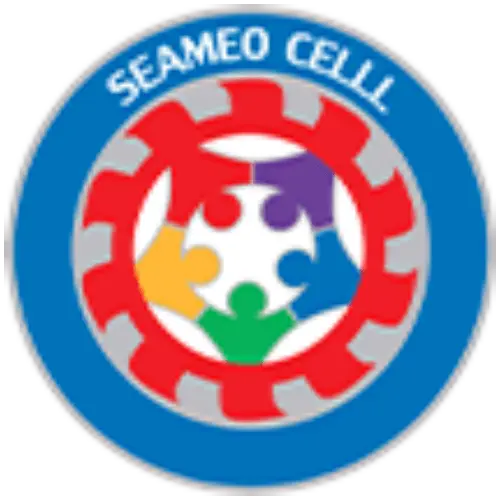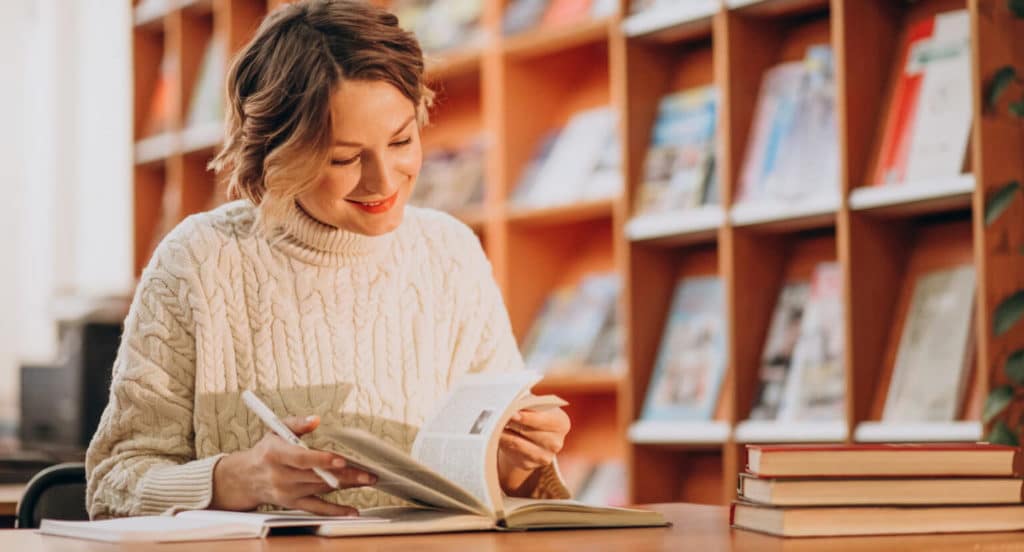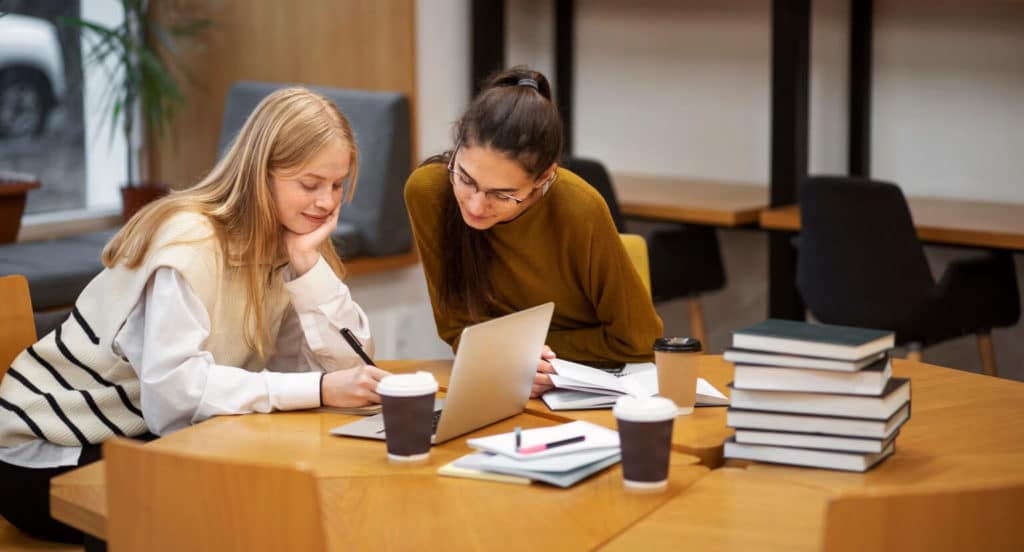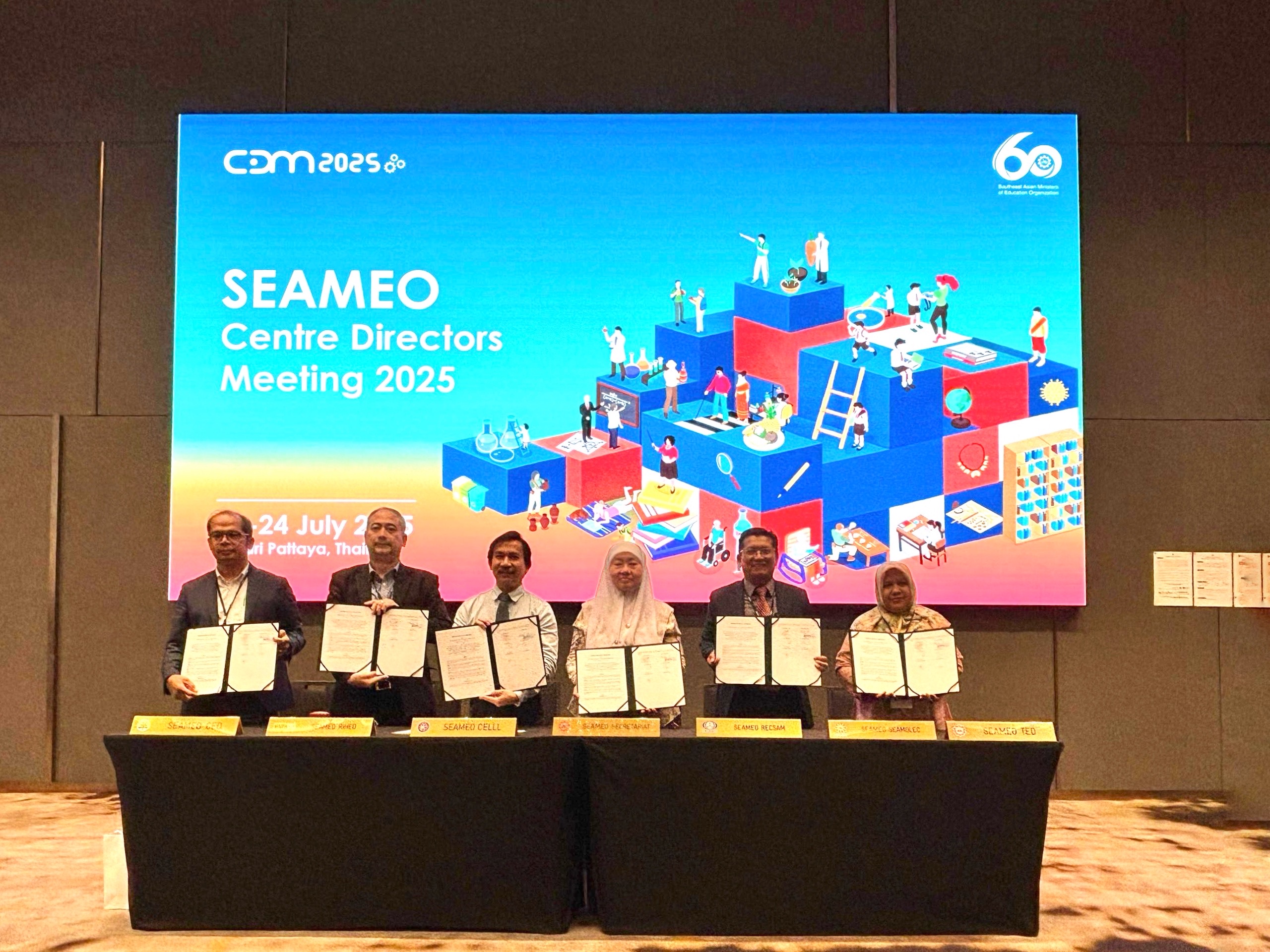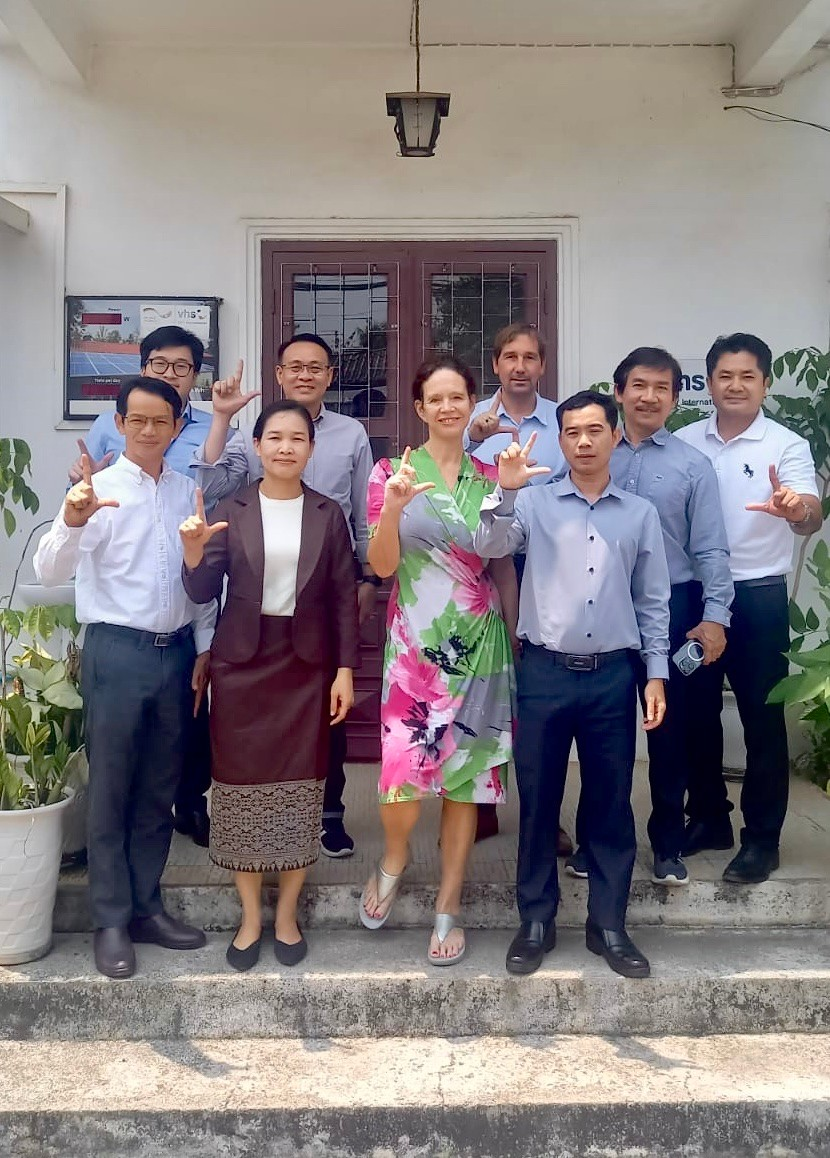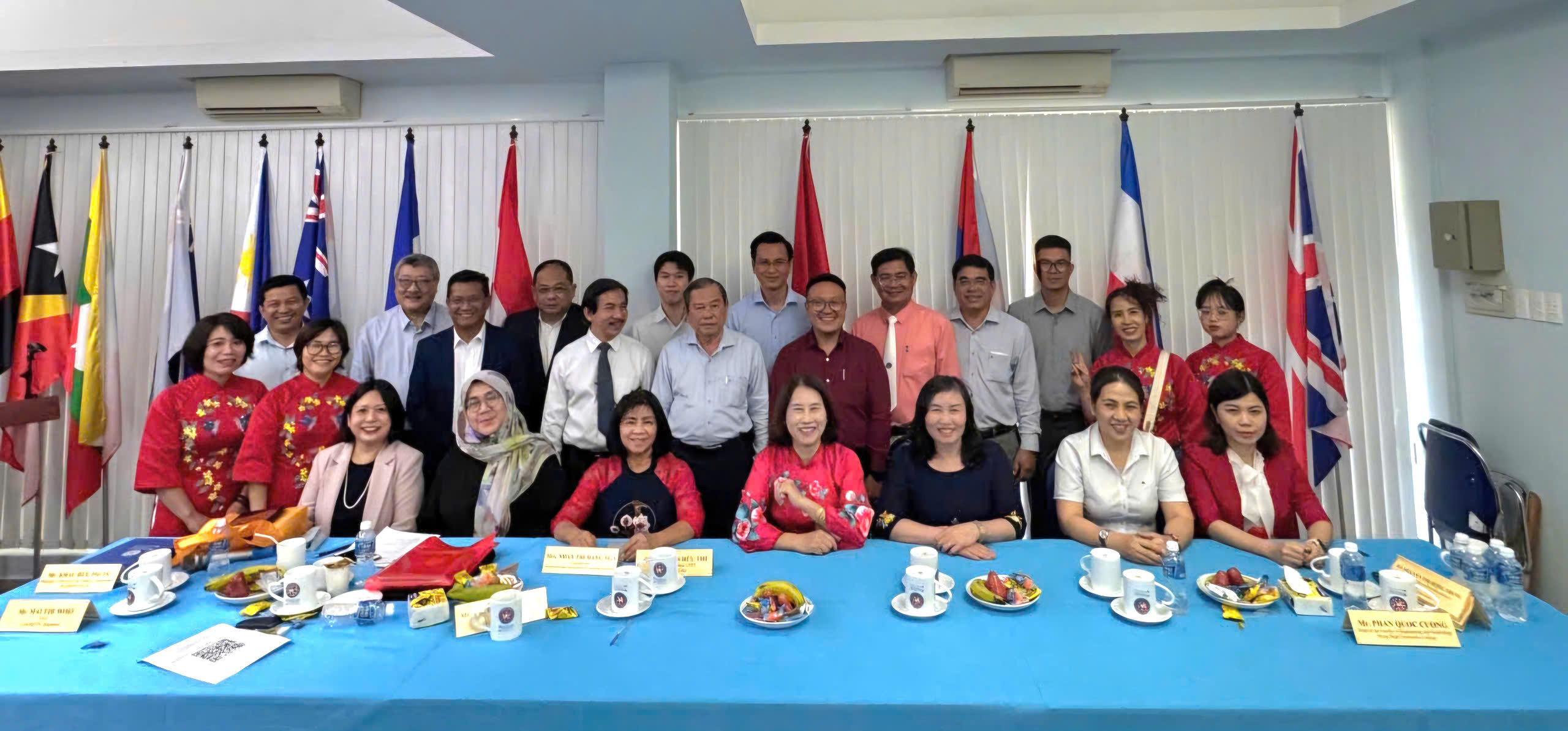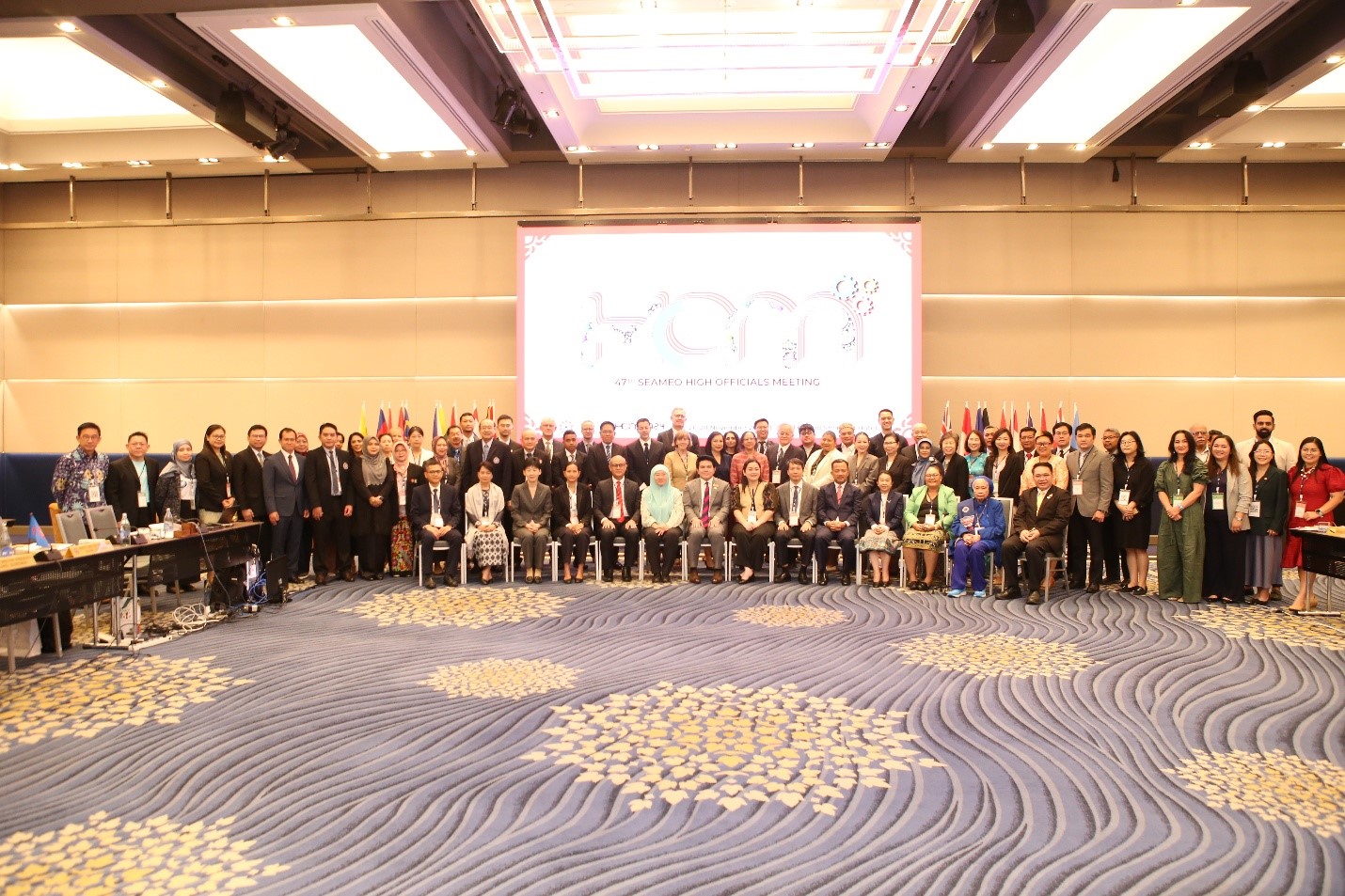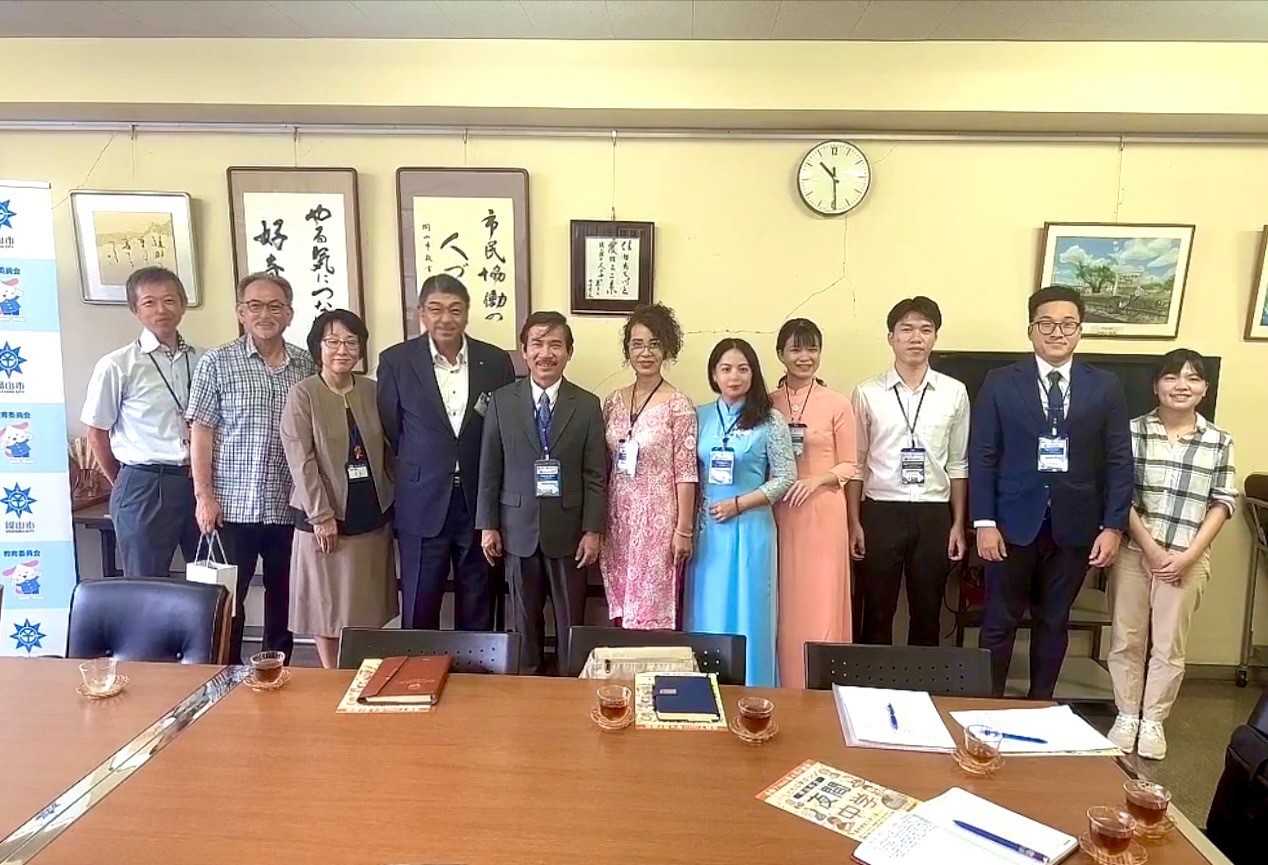PATTAYA, Thailand – The SEAMEO Secretariat (SEAMES) convened its annual Centre Directors Meeting (CDM) in Pattaya, Thailand, on 23-24 July 2025, to reflect on achievements, discuss emerging priorities, and strengthen regional cooperation. Present at the event were over 100 participants from SEAMEO’s 26 centres and networks, associate and affiliate members, and various international education organisations.
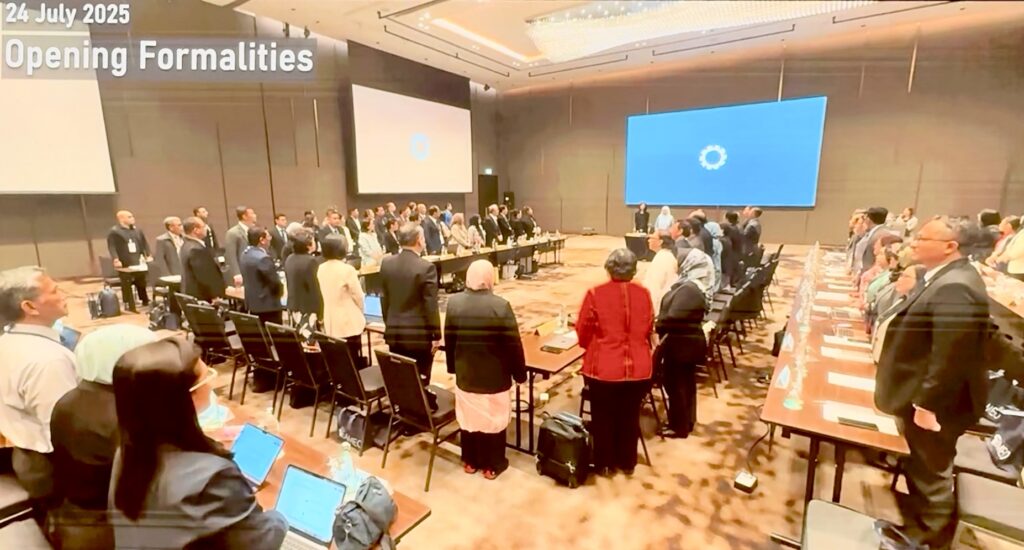
The meeting opened with the welcome remarks by Datuk Dr Habibah Abdul Rahim, Director of SEAMEO Secretariat (SEAMES). She highlighted two central themes for the Centre networking sessions: gender mainstreaming and cross-centre collaboration in Artificial Intelligence (AI).
On gender mainstreaming, she noted SEAMEO’s progress since 2014, with working groups now addressing seven gender-based topics across four SEAMEO strategic areas. On the topic of AI, she stressed the need for collective action: “It is timely we align and explore what we can do together across our centres on this topic.”
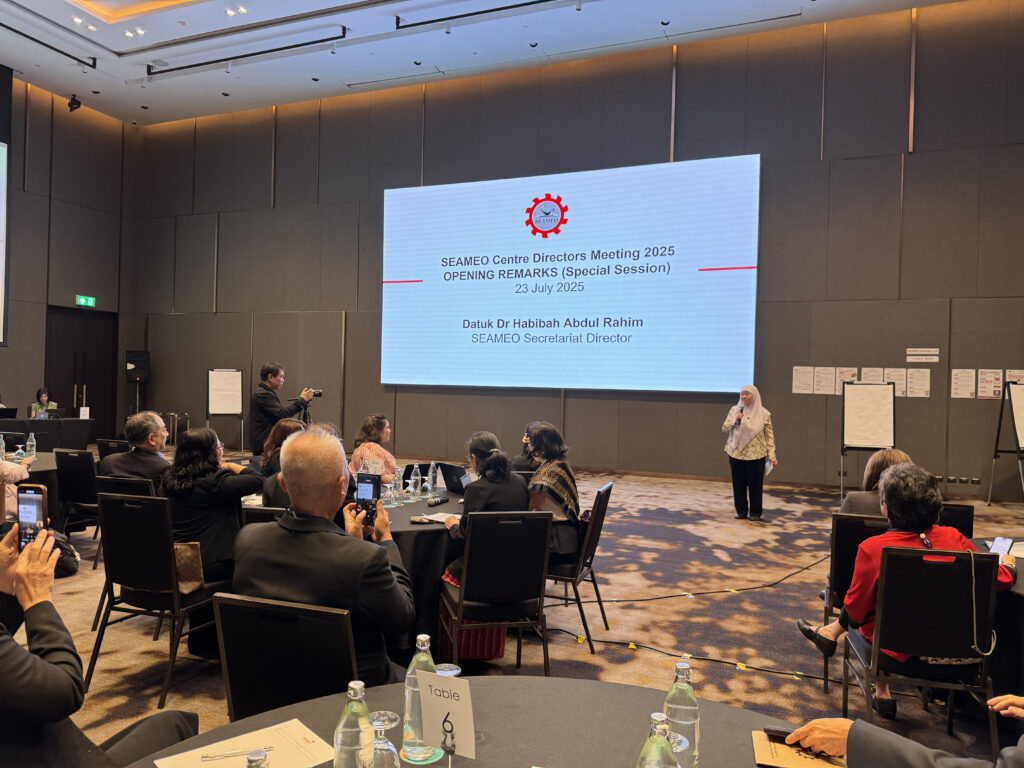
Following Datuk Dr Habibah, Ms. Pintip Iamnirath, Deputy Director of SEAMES, reported on SEAMEO’s efforts in gender mainstreaming. She remarked that gender equity is “not a cup of tea” but a challenging endeavour that “requires lots of research.” She clarified that “gender” goes beyond biological sex to encompass the roles, opportunities, and barriers society assigns to individuals. For gender mainstreaming to become a reality, she asserted, it must begin with implementable policies and guidelines that are “not something only written on paper, but should be alive.” Ms. Iamnirath shared that SEAMEO has developed a comprehensive gender strategy for sustainable human development, transforming strategies into actionable steps to enhance quality of life in alignment with the Sustainable Development Goals. She introduced SEAMEO’s concept of gender equality continuum, which progresses from early negative and harmful behaviours to responsive behaviour to gender-transformative actions, noting that a recent survey indicates SEAMEO centres have reached a “responsive behaviour” stage. She stressed that gender mainstreaming must encompass policy advocacy, organisational mainstreaming, programme development and implementation, and continuous learning and innovation.
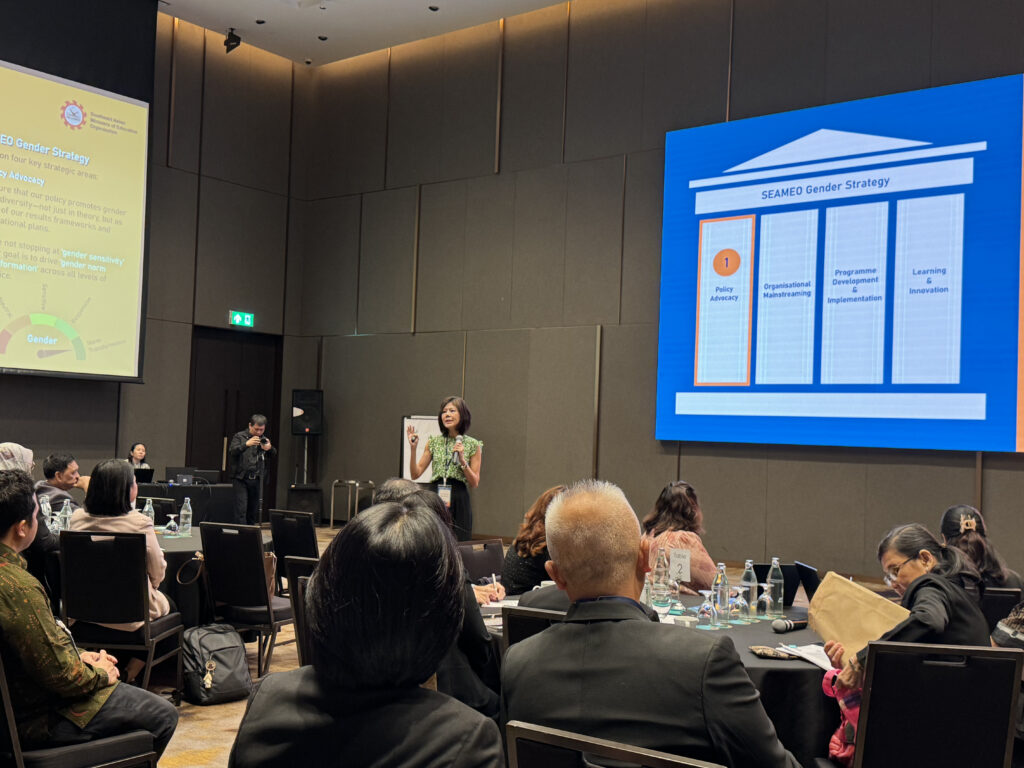
The morning session also featured a presentation by EdTech Hub, a global research partnership dedicated to advancing education in the region. Their focus this year was on fostering collaboration to shape the AI landscape in Southeast Asia. Recognising the absence of a unified regional policy on AI in teaching and learning, yet acknowledging strong national interest, EdTech Hub introduced its “Sandbox” initiative – a secure environment for testing and evaluating educational ideas and policies before large-scale implementation. They proposed the creation of a regional AI Resource Hub, aiming to consolidate diverse knowledge pieces on AI utilisation in education across Southeast Asia.
A highlight of the morning was the signing of a Memorandum of Agreement (MoA) among six SEAMEO centers: SEAMEO CELLL (as the lead center), CED, RECSAM, RIHED, SEAMOLEC, and TED. This inter-centre collaboration programme is dedicated to integrating AI into education, with all six centers committed to making AI a meaningful tool that enhances learning for all in the region.
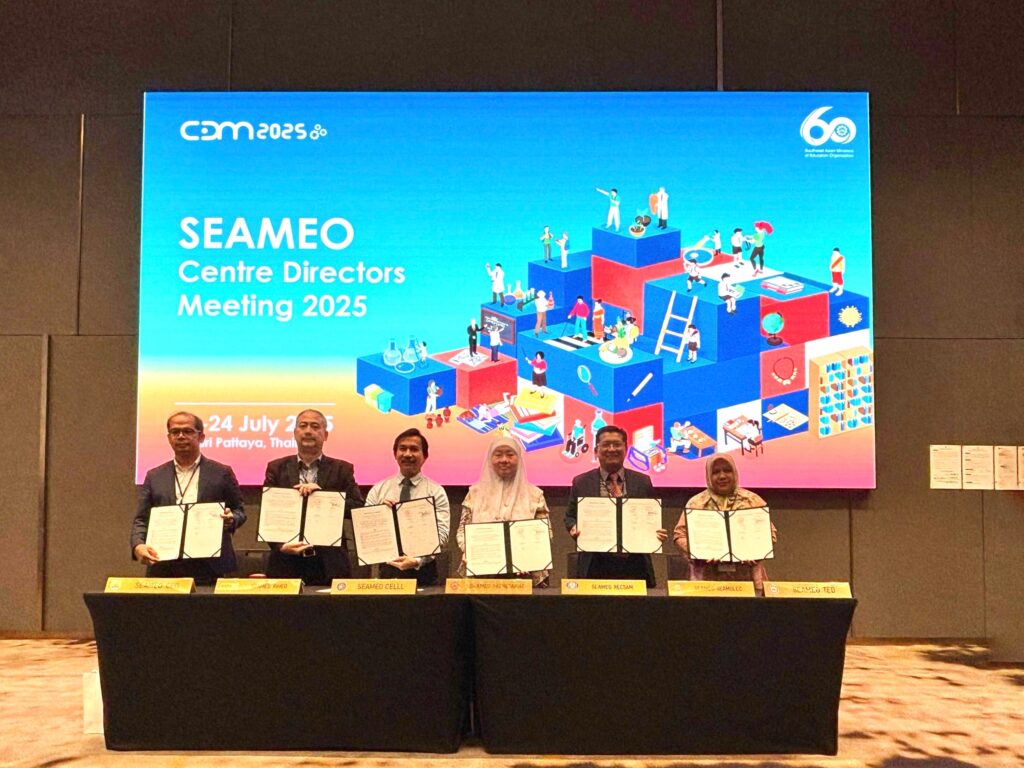
The afternoon of Day One was dedicated to networking, providing a valuable platform for SEAMEO centres to connect with various international education organisations and institutions. These included the Southeast Asia One Health University Network (SEAOHUN) Secretariat, the University of Tsukuba, EdTech Hub, Global School Leaders, Go Study Global Education, UNESCO Regional Office in Bangkok, UNICEF East Asia and the Pacific Regional Office (EAPRO), Alchemy Education Solutions, Canva Education, Gaeni Moentari Nusantara (GEMA) Foundation, Labtech International Ltd., Walnut Education, Apple, Association of Universities of Asia and the Pacific (AUAP), Edvolution, Everway, King Mongkut’s University of Technology Thonburi (KMUTT), Kyungwoon University, and UNESCO International Research and Training Centre for Rural Education (INRULED).
SEAMEO CELLL met with the University of Tsukuba (UT), EdTech Hub, and Canva Education. The University of Tsukuba is implementing its new “Social Impact Tsukuba” programme, an initiative from Japan’s Ministry of Education, Culture, Sports, Technology and Science to promote multicultural co-learning by bringing together Japanese and international students in collaborative studies, fieldwork, and lectures focused on local issues. The goal is to cultivate their passion and capabilities to address local challenges. Further information can be found at https://social-impact.projects.tsukuba.ac.jp/about/en/ .
EdTech Hub reiterated its free offer of the “Sandbox” service until March 2026. Sandbox is an approach to testing and learning whether an idea or related policy is effective before scaling it up. The service aims to improve teaching and learning, support marginalised learners, digital skill development for employability and data for decision making. For further information, send emails to [email protected] or [email protected] .
Canva Education showcased its free platform for teachers, offering online classroom creation, lesson templates, and engaging tools. It announced an upcoming Vietnamese-language version to better support interested Vietnamese teachers. For teachers who wish to learn how to utilise Canva, there is the page Design School, where they can learn the skills and techniques (https://www.canva.com/en/design-school/). Further information can be found at https://www.canva.com/education/.
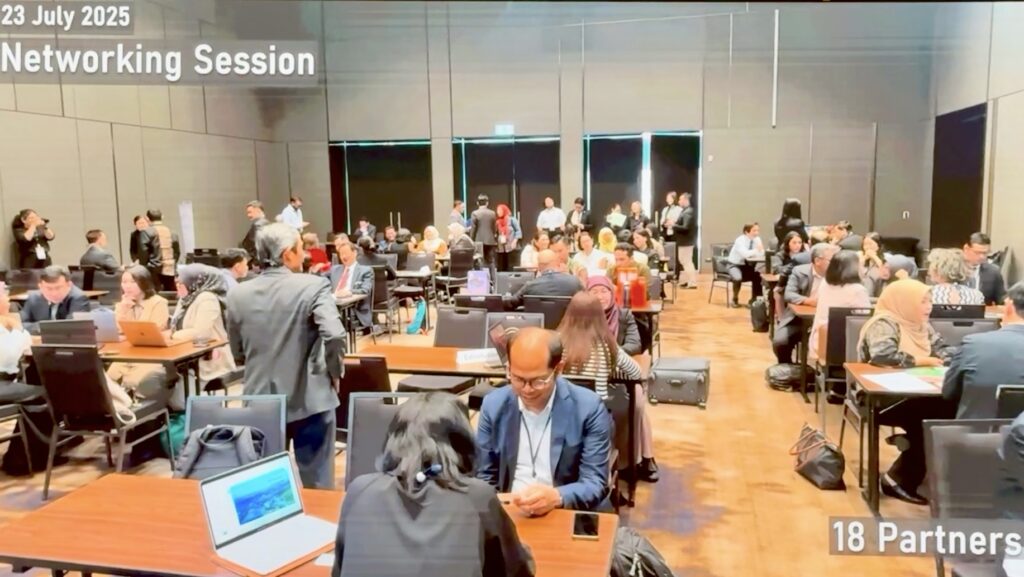
The meeting entered Day Two with the welcome remarks from the SEAMES Director, who highlighted the CDM’s enduring legacy since its inception in 1971 as an “essential platform to celebrate collective achievements, exchange and update across the centres and network, and identify new avenues for collaboration to strengthen SEAMEO’s regional impact.” This year’s meeting aimed for more centre collaboration, meaningful training, and new partnerships, building on the outcomes of the 2025 SEAMEO Council Conference which deepened regional understanding, advanced regional collaboration, promoted transformation and green education, and emphasised translating research into action.
According to SEAMES Director, three major themes have emerged within SEAMEO’s work: accountability, collaboration, and equity. The SEAMEO Results Framework, aligned with the SEAMEO Strategic Plan 2021-2030, has been developed to ensure accountability. SEAMEO proudly maintains its position as one of the most trusted regional organisations in Southeast Asia, representing the region in global forums such as the UNESCO High-level Steering Committee and Digital Learning Week in Paris. Equity remains a core principle guiding programmes from foundational learning to initiatives for out-of-school children and health research. The Director concluded by congratulating the centers on their impactful work and expressing hope for an inspiring meeting.
This year, SEAMEO celebrates its 60th anniversary. A video presentation celebrated SEAMEO’s six decades development, showcasing its dedication to empowering people, nurturing scientists, and committing to a better life for all.
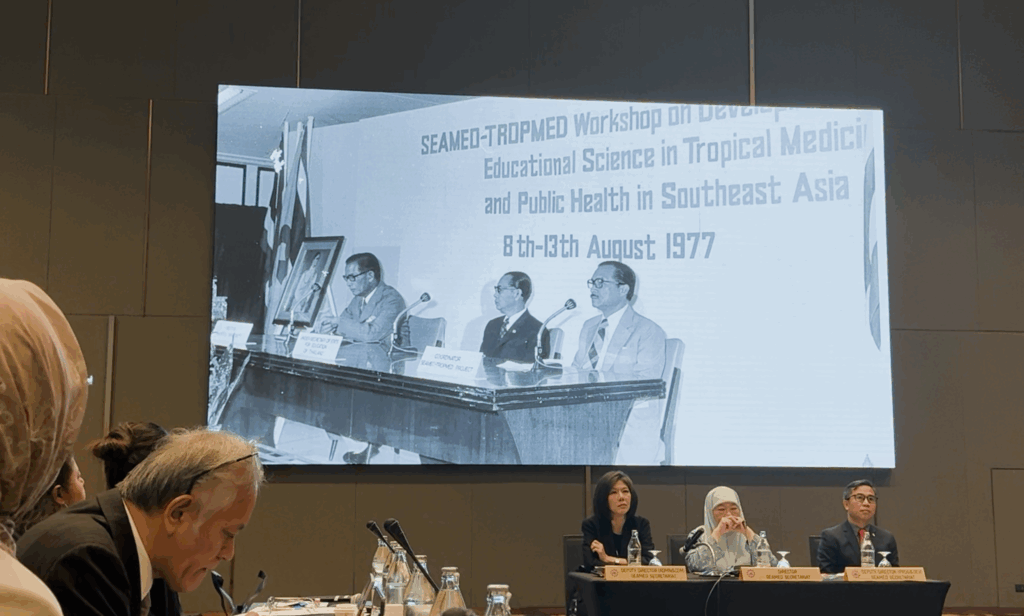
SEAMES then presented its achievements as an inter-governmental organisation over the past year. These included disseminating nine policy briefs to policy actors, completing 477 research studies, publishing 199, presenting 452, and translating 345 into trainings or products. SEAMEO trained 2,747 research actors, completed 25 policy development materials, presented 18 to ministries and government bodies, co-organised 30 policy forums/dialogues with 3,094 participants, and trained 288 policy actors.
Thirty-nine working papers were subsequently presented by SEAMEO centres for information and discussion.
Mr. Khau Huu Phuoc, Research and Training Manager of SEAMEO CELLL, presented on its three-interlinked component framework programme. This includes teacher training in AI integration for general education and TVET teachers, which is the inter-centre collaboration programme under the newly signed MoA on Day One, an award-winning teacher competition in AI utilisation in teaching, where teachers put into practice what they learn from the training, and an AI-powered student competency assessment with scholarships and realia as prizes. All components are planned to be organised annually, with the first scheduled for September 2025.
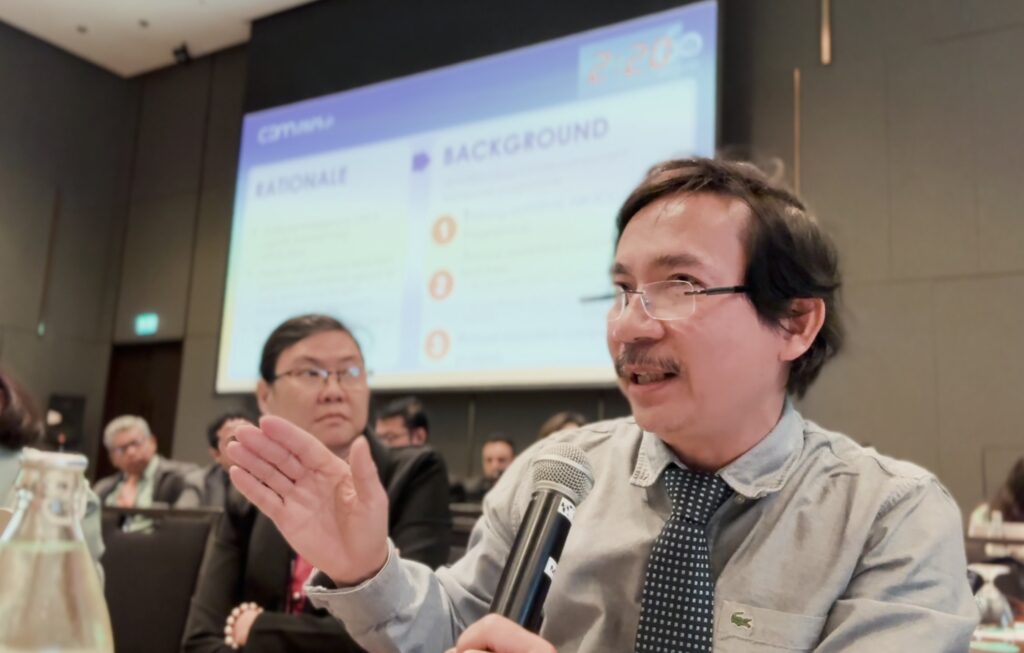
The meeting also listened to reports from SEAMEO’s affiliate members, the Southeast Asia One Health University Network (SEAOHUN) with it knowledge management and sharing using technology, currently with membership from 115 universities in eight countries, including Indonesia, Malaysia, Thailand, Vietnam (four founding members), Cambodia, Lao PDR, Philippines, and Myanmar; the University of Tsukuba with its annual SEAMEO-University of Tsukuba symposiums (last year was the 13th) and the new Social Impact Project; the British Council, a ten-year partner of SEAMEO, with its English language programmes and a focus on SDG 5 (gender equity); the ASEAN-UK with its Supporting the Advancement of Girls’ Education Programme (SAGE programme); the Education University of Hong Kong, ranked 7th among Hong Kong universities, with its call for collaboration.
Finally, three SEAMEO centers – SEN, BIOTROP, and CHAT – shared their good practices in promoting workplace inclusivity. SEAMEO CHAT specifically emphasised that its inclusivity efforts extend beyond the workplace to encompass cultural and traditional events.
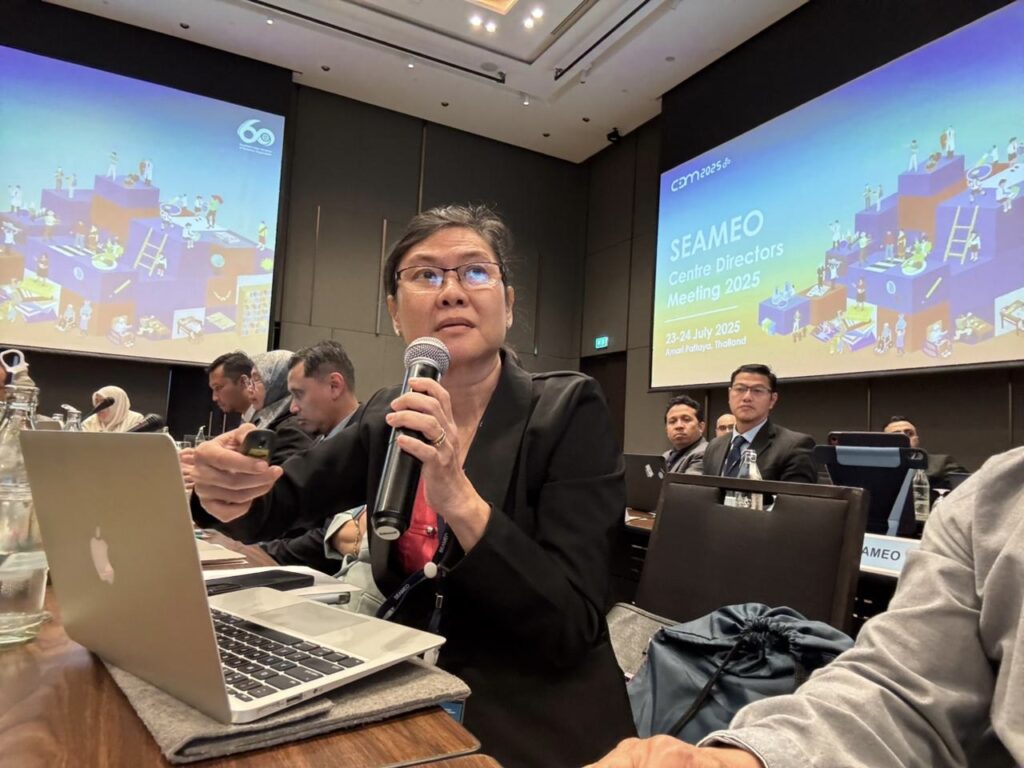
The SEAMEO Centre Directors Meeting concluded with the closing remarks from SEAMES Director, Datuk Dr Habibah Abdul Rahim, who remarked, “We have come with diverse expertise, but a unity in commitment.” She extended her gratitude to the SEAMES staff for their diligent work in ensuring the meeting’s success. She urged the centers to continue pushing boundaries, actively shape the AI landscape in the region, overcome challenges collaboratively, and maintain the momentum generated during the meeting.
